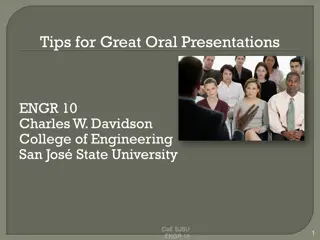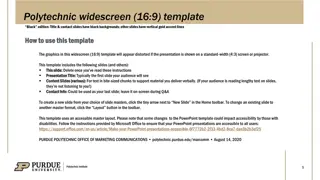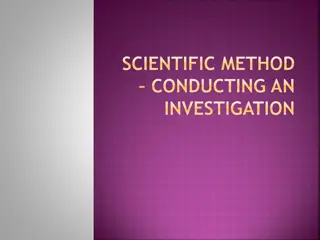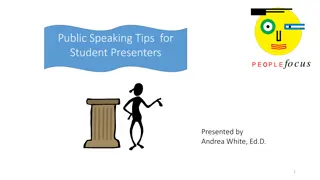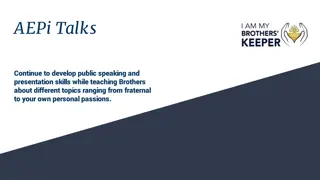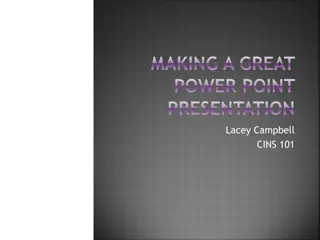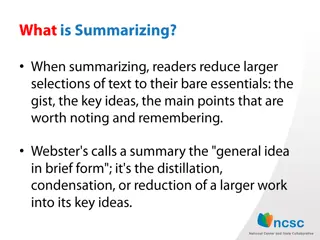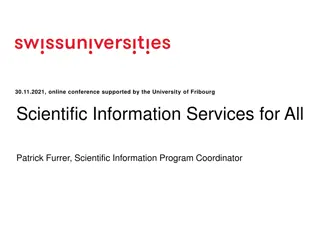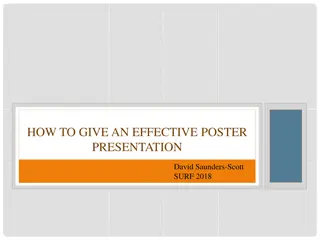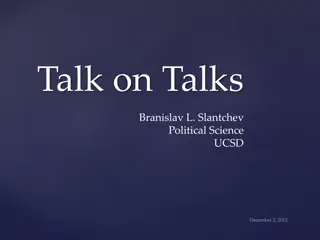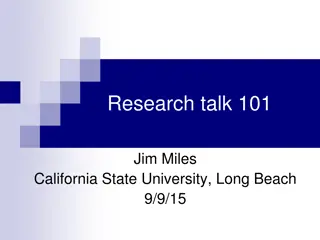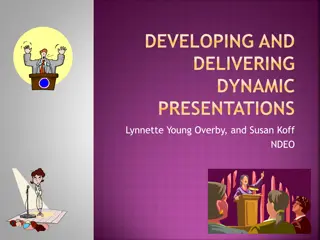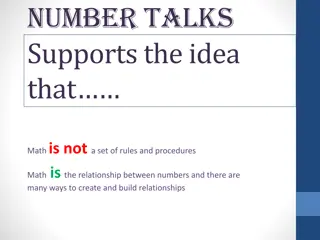Enhancing Scientific Talks: Practical Tips for Impactful Presentations
Improve your scientific talks with these 10 valuable suggestions, including starting with a clear title, motivating your audience, analyzing prior work, explaining your thesis, detailing your method effectively, and ensuring readability in your diagrams and presentation style. Enhance your skills in both giving and listening to talks for better knowledge synthesis.
Download Presentation

Please find below an Image/Link to download the presentation.
The content on the website is provided AS IS for your information and personal use only. It may not be sold, licensed, or shared on other websites without obtaining consent from the author.If you encounter any issues during the download, it is possible that the publisher has removed the file from their server.
You are allowed to download the files provided on this website for personal or commercial use, subject to the condition that they are used lawfully. All files are the property of their respective owners.
The content on the website is provided AS IS for your information and personal use only. It may not be sold, licensed, or shared on other websites without obtaining consent from the author.
E N D
Presentation Transcript
10 Suggestions for Improving your Scientific Talks Larry Fagan
Goals of this talk 1) Describe some small changes that will significantly improve BMI scientific talks (Larry) 2) Explain what steps you can take to actively learn while listening to a talk (Russ)
Why should you care? [Giving talks]: Your great ideas won t be communicated unless you can present clearly [Listening to talks]: A key opportunity to develop your skills to synthesize information
1. Start from the beginning Don t overload the title Use the title slide to introduce and define your topic
2. Motivate the talk What are the big ideas? What does YOUR audience need to know? Why should the audience sit through this talk? (from the medical/biological domain and computational perspective)?
3. Describe and analyze the prior work Your research builds on previous work You should briefly explain key prior projects MOST IMPORTANTLY, you need to tell us: The limitations of the prior work How your research addresses those limitations
4. Explain the thesis Improved computational method OR Existing method applied in new way WILL HAVE a significant effect on the ability to solve the scientific problem that you specified at the beginning
5. Explain the method Concentrate on one or two aspects of your research Consider presenting the flow in both words and diagrams Some parts should be understood by everyone, some parts may be understandable to only a few people in the audience
7. Dont let presentation style keep you from communicating ideas Face the audience Speak slowly Make sure you can be heard Vary your spoken voice Don t read off of the screen Use the pointer appropriately Explain the axes of your graphs
8a. Limit the information on each slide One of the biggest problems that I see (and I see it quite often) is that the speaker tries to put their whole talk onto the slide. And not just the most important information, but I mean the asides and things that really should be spoken and not listed word for word on the slide. Another variant of this is when the speaker puts a set of words on the slide and then talks about a different topic, thus leaving the listener to try and read the slides and listen to the speaker at the same time. However, this is really very hard to do from a cognitive perspective.
8b. Limit the information on each slide Keep to less than 50 words per slide Use sentence fragments Don t show one set of text and talk about something different
9. The talk should tell a logical story What problem are you solving? Why should the audience care about it? What have others done? Why didn t they solve the problem? How will you address the problems in a different way? How will you know that you have solved the problems in a superior way (or not)?
10. Summarize the takeaway messages Provide the background and motivation for the audience Communicate the scientific method in a series of logical steps (Hint: use the template) Summarize how your approach will solve a clinical/biological problem using novel informatics approaches Pay attention to presentation skills
Goals of this talk 1) Describe some small changes that will significantly improve BMI scientific talks (Larry) 2) Explain what steps you can take to actively learn while listening to a talk (Russ)


![❤[PDF]⚡ Civil War Talks: Further Reminiscences of George S. Bernard and His Fel](/thumb/20551/pdf-civil-war-talks-further-reminiscences-of-george-s-bernard-and-his-fel.jpg)


